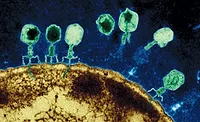Ozone Treatment Is Effective Against Aflatoxin, Fungi

Credit: Activedia via Pixabay
Ozone is an established antimicrobial disinfectant in the food industry, and is now showing promise as an antifungal and anti-aflatoxin agent. A study published in the peer-reviewed Brazilian Journal of Biology has demonstrated the efficacy of ozone treatment in reducing fungi and aflatoxin contamination of nuts, as well as explored how ozonation affects the nutritional quality of nuts. The study found that, when used for a suitable length of time, ozonation is a potential solution for reducing the microbial load in nuts.
Samples of pistachios, hazelnuts, cashews, peanuts, almonds, chestnuts, and walnuts were randomly selected from retail markets to be tested in the study. Researchers tested the samples for fungi and identified the species of fungi present. After the samples were subjected to ozonation, the researchers observed the sporicidal activity of ozone through a spore germination assay. The researchers also tested the ozonated nuts to determine the protein, lipid, and sugar contents of the samples.
The study found peanuts, pistachios, and almonds to be the most fungi-contaminated nuts, while chestnuts and walnuts were the least contaminated. The most prevalent fungal species were identified as Aspergillus, Penicillum, Fusarium, and Rhizopus. Aspergillus fungi—such as A. flavus, A. parasiticus, and A. nomius—are known to produce mycotoxins, which are a growing concern and can have a damaging effect on human and animal health.
Ozonation at a concentration of 4 parts per million (ppm) was shown to inhibit fungal spore production for all tested species, as well as degrade fungal DNA and RNA, induce genetic mutation that affects spore germination and causes cell inactivation, and cause rapid cell death. The study also demonstrated that an increase in ozone exposure time from 30 to 180 minutes resulted in a significant reduction in the radial growth of A. flavus. Additionally, the study demonstrated the efficacy of ozone in causing the leakage of proteins and DNA from the cell membrane of A. flavus, as well as destruction of the inner cell wall of A. flavus. The results also revealed that ozonation can greatly reduce the presence of aflatoxins to levels that are lower than the maximum allowed thresholds for consumption.
The researchers note that a degree of caution should be exercised when using ozone as an antimicrobial, antifungal, or anti-aflotoxin agent to avoid the degradation of treated foods’ nutritional value. The study showed an adverse effect of ozone on the lipid profile of nuts with exposure time over 90 minutes.
Overall, the researchers assert that ozone treatment can be an effective method for the control of fungi and aflatoxin in nuts. The study demonstrated the efficacy of ozone gas at 4 ppm to significantly reduce the total fungal count and reduce aflatoxins in pistachios, peanuts, and almonds. Ozonation was also shown to affect the DNA and cell structure of fungi. However, when the samples’ exposure to ozone was increased to 180 minutes, the lipid, carbohydrate, fatty acid, and protein profiles in pistachios, peanuts, and almonds were greatly affected. Therefore, the researchers suggest caution when exposing nuts to ozone for long periods of time.
Looking for quick answers on food safety topics?
Try Ask FSM, our new smart AI search tool.
Ask FSM →









